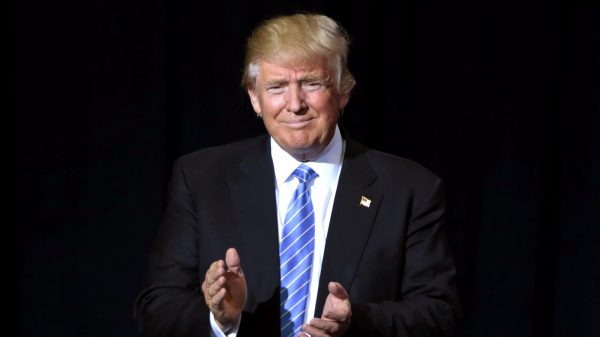As with all political campaigns that reignite discussions on reducing government spending and eliminating bureaucratic inefficiency, the US Postal Service (USPS) — which reported a net loss of $9.5 billion in the fiscal year ending September 30, 2024 — is now likely to find itself under renewed scrutiny. The establishment of the Department of Government Efficiency (DOGE), led by Elon Musk and Vivek Ramaswamy, has intensified speculation about the fate of whole swaths of sclerotic government agencies and departments, which should put the USPS directly in its crosshairs.
Privatizing the US Postal Service (USPS) would be a significant step toward improving efficiency, encouraging innovation, and ensuring financial sustainability for an institution less exhibiting than wholly characterized by decades upon decades of ossification and financial losses. As a government-backed monopoly, the USPS controls first-class mail delivery and mailboxes while benefiting from advantages like tax exemptions and low-interest Treasury loans. However, its ability to operate effectively is constrained by political interference, including strict limits on pricing and service adjustments. A market-driven alternative — long discussed, but now feasible — would involve eliminating government control, introducing competition, and allowing market forces to create a streamlined, customer-focused postal system.
The USPS has grappled with severe financial challenges, amassing $69 billion in losses since 2007. Labor costs remain a significant factor, with average compensation at $85,800 per employee in 2017 — far exceeding private-sector counterparts like FedEx ($53,900) and UPS ($76,200). Labor expenses account for more than three-quarters of its budget, and union agreements limit flexibility in workforce management and cost control. Compounding these issues, first-class mail volumes — historically the USPS’s most lucrative product — declined by 45 percent between 2001 and 2019, largely due to the rise of email and online bill payments. Efforts to adapt have been stymied by Congress, which has resisted essential cost-cutting measures like closing low-traffic post office locations or reducing delivery frequency, leaving the USPS in an increasingly unsustainable position.
Private ownership drives cost savings and improved performance by encouraging competition and fostering innovation. Examples from abroad show the potential success of this approach: Germany’s Deutsche Post, privatized in 2000, transformed into a global logistics leader under the DHL brand, while the UK’s Royal Mail, privatized in 2013, modernized its operations and enhanced service delivery. And since 2007, Japan has been privatizing its postal service in stages, beginning with the transformation of Japan Post into a state-owned corporation and its subsequent reorganization into separate entities for mail delivery, banking, and insurance services.
UPS’s third-quarter 2024 profit growth, fueled by recovering volumes and effective cost-cutting strategies, highlights the strengths of private ownership in the delivery sector. Unlike government-run organizations, private firms such as UPS, FedEx, DHL, PitneyBowes, and others can quickly respond to market dynamics, adjusting both their operation and business strategy on the fly to boost both profitability and service excellence.
A privatized USPS could eliminate redundancies, shut down unprofitable locations, and renegotiate labor agreements. Access to private capital markets would allow investments in infrastructure and technology, reducing reliance on taxpayers. Ending the USPS’s monopoly on mail delivery and mailbox access would also open the market to competition, encouraging private companies to deliver services not on a default basis, but instead tailored to consumer needs and desires.
Some critics worry that privatizing the USPS could leave rural communities without adequate service or raise costs for consumers. Evidence from European countries suggests otherwise. Private operators like Sweden’s CityMail have successfully maintained cost-effective rural delivery by using innovations such as cluster mailboxes and reduced delivery frequencies. Additionally, introducing competition would likely drive prices down over time, as companies compete to win customers by improving services and cutting costs.
Here in the United States just last summer, Amazon expanded its one- to two-day delivery services into rural areas in an effort to boost sales in less-populated regions and reduce reliance on the USPS for deliveries. The key: data-driven warehouse placement decisions, flexibly contracted drivers, and local businesses, all of which contribute to enhancing its logistics network. The rural delivery infrastructure of monopoly government postal service simply cannot compete with it.
Another concern is the impact on USPS employees. While privatization would involve workforce adjustments and restructuring, these changes are necessary to align labor costs with market realities. Flexible labor practices and performance-based pay in the private sector would replace rigid, union-dominated agreements, ensuring compensation reflects productivity and helping the organization operate more efficiently.
The National Association of Letter Carriers (NALC) and the American Postal Workers Union (APWU), representing USPS letter carriers and clerks respectively, have strongly opposed privatization and service reductions by arguing that such measures would lead to job losses, among other outcomes. Setting aside the audacity of proposing that taxpayer dollars should be squandered to sustain jobs in a poorly-managed, money-hemorrhaging government unit, savings generated by eliminating the most egregiously wasteful parts of the postal service could be applied toward funding a temporary USPS outplacement service.
Incremental reforms could ease the transition. Congress could begin by:
- Requiring the USPS to Close Unprofitable Locations: Over 4,500 post offices average fewer than five customer visits per day. While facts of this sort are often used to connote readiness or ubiquity, shuttering those locations would immediately generate savings.
- Prohibiting Cross-Subsidies: The USPS often uses profits from its monopoly products to subsidize package delivery, distorting the competitive landscape.
- Reducing the Universal Service Obligation (USO): Narrowing requirements for six-day delivery and uniform pricing would reduce operational burdens, allowing greater flexibility.
The experience of European postal privatization highlights potential benefits for the US. Germany’s Deutsche Post restructured its wage systems, outsourced non-essential tasks, and leveraged technology to become a globally respected postal and logistics leader. In Sweden, postal retail services were relocated to grocery stores, eliminating the need for standalone post offices while still providing convenient access for customers. These examples demonstrate how privatized systems can adjust to evolving market demands, improve efficiency, and lower costs.
Privatizing the USPS would free it from political constraints, allowing it to respond effectively in fast-changing markets. Entrepreneurs could introduce new technologies and innovative business models to the delivery industry, offering consumers better services at lower costs. Turning the inefficient and overburdened US Postal Service into a competitive operation would not only save taxpayers money and improve services, but showcase the transformative potential of applying market principles to stagnant government institutions. (Amtrak, too, might make for a good starting point.)
The current government-supported monopoly is outdated and profligate. By shifting to a privatized model, the USPS could evolve into a self-reliant enterprise that no longer depends on government support. Let the free market, rather than bilked citizens, shape the future of mail and package delivery. The successful experiences of other nations strongly suggests that we can transform our postal service into a thrifty, nimble, and respectable enterprise.





















